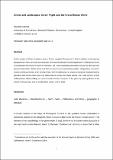Files in this item
Circles and landscapes : Ceres’ flight over the Greco-Roman world
Item metadata
| dc.contributor.author | Manioti, Nikoletta | |
| dc.date.accessioned | 2018-04-01T23:34:20Z | |
| dc.date.available | 2018-04-01T23:34:20Z | |
| dc.date.issued | 2017 | |
| dc.identifier | 220488259 | |
| dc.identifier | 474568ad-7966-466f-b22d-4bee0643d4d1 | |
| dc.identifier | 85011062097 | |
| dc.identifier | 000395630500005 | |
| dc.identifier.citation | Manioti , N 2017 , ' Circles and landscapes : Ceres’ flight over the Greco-Roman world ' , Mnemosyne , vol. 70 , no. 1 , pp. 79-93 . https://doi.org/10.1163/1568525X-12342106 | en |
| dc.identifier.issn | 0026-7074 | |
| dc.identifier.other | ORCID: /0000-0002-4607-2726/work/60888385 | |
| dc.identifier.uri | https://hdl.handle.net/10023/13052 | |
| dc.description.abstract | Ovid’s version of Ceres’ travels in search for her daughter Proserpina in Fasti 4 reflects contemporary geographical views. We note an expansion of horizons that has already happened in Callimachus Hymn 6 compared to the Homeric Hymn to Demeter, but is now reaching even further as well as offering more precise information. At the same time Ovid is inspired by Callimachus’ pattern of figurative concentric circles (Achelous/Ocean, ever-flowing rivers, well of Callichorus) to create a narrative characterised by figurative and literal circles (one e.g. being Henna, Sicily, the whole world). The Fasti version is thus Callimachean without failing to conform to the Roman character of the poem by placing Rome at the climax of the journey, and its world below Ceres’ chariot flight. | |
| dc.format.extent | 277708 | |
| dc.language.iso | eng | |
| dc.relation.ispartof | Mnemosyne | en |
| dc.subject | Latin literature | en |
| dc.subject | Demeter/Ceres | en |
| dc.subject | Ovid's Fasti | en |
| dc.subject | Callimachus and Ovid | en |
| dc.subject | Geography in literature | en |
| dc.subject | PA Classical philology | en |
| dc.subject | T-NDAS | en |
| dc.subject.lcc | PA | en |
| dc.title | Circles and landscapes : Ceres’ flight over the Greco-Roman world | en |
| dc.type | Journal article | en |
| dc.contributor.sponsor | The Leverhulme Trust | en |
| dc.contributor.institution | University of St Andrews. School of Classics | en |
| dc.contributor.institution | University of St Andrews. Centre for the Literatures of the Roman Empire | en |
| dc.contributor.institution | University of St Andrews. Centre for Ancient Environmental Studies | en |
| dc.identifier.doi | 10.1163/1568525X-12342106 | |
| dc.description.status | Peer reviewed | en |
| dc.date.embargoedUntil | 2018-04-01 | |
| dc.identifier.grantnumber | ECF-2014-058 | en |
This item appears in the following Collection(s)
Items in the St Andrews Research Repository are protected by copyright, with all rights reserved, unless otherwise indicated.

